Lyn ((L-I-N))
The Golden Empire
Lyn (Lynese and Midlandic: Lyn Old Lynese and Quelithro: Lin ↠ Lynn ↠ (Retrovanized: Lyn) is a notable nation situated in Southern Itaniûm[1], south of the Midlandic Sea. Dubbed the “The Golden Empire” or simply "The Empire", it remains one of the olcdest and most powerful nations on earth, a potent force of both the ancient, middle, and modern world. With history stretching as far as 14,000 years, the nation of Lyn prides itself on having one of the longest and most complex cultural traditions in the world, a cradle of civilization. Its language (Lynese), culture, and philosophy has been spread over the world through various empires, most notably the Laterian Empire, which took a vast portion of the Western and Midlandic World by storm. It has gained renown across the Midlandic World for its mining of gold, granting it its moniker, "The Golden Empire". It remains an entrepot for commerce and culture, a destination of the Midlandic Sea, and will likely remain such for centuries, if not millenia more. Its monumental awe-striking architecture, rich history, and art has enthralled, inspired, and gave way to those with the most vivid imaginations for millennia, leaving behind a lasting legacy of both culture, history, syncretism, and mythos. Lyn has often been imitated and depicted in art and popular culture around the world due to its unique architecture and anciest cultural heritage, and has played a role in shaping the architectural norms that would define both the world of the ancients and the world of today. The name "Lyn" comes from a Quelithro word linm which means "bright light", "god", or "gold", and was often used as an exclamation word (!) to express pride in Lynese culture and wealth and the aurora of glory. that surrounds Lyn. Today, Lyn exists as a link between the Messalmsi world of commerce and the Quengese world of cultural syncretismand eclecticism, happening between Illica, Sorgaë, the Tarit Sea, and Itaniûm. Lyn, along with Zomonoga and Queng, was one of the first most successful civilizations when it came to controlling irrigation and farming which ultimately is what made their civilization so successful to begin with. And in the center of Lyn lies the great river known as the Red Run, which flows through the country of Lyn and similar to the Zomonog in Zomonoga, it is often seen as one of the most important crucial of Lynese civilization, the birthplace of Lynese culture and civilization. The national capital of Lyn is Tarpis, a city concentrated on mainly the higher reaches of the Red Run. Tarpis has a population of about 1.5 million people (Source: 2995 Census), making it ranked as the third largest-populated city in the known world. Tarpis sits just at an oasis known as the Great Oasis, surronded by vast desert dunes and colored sand. Tarpis remains one of the largest tourist attractions on earth, and for the millions of followers of the Laterian Faith, it remains one of the most sacred and holy cities on earth, being the fountainhead or "source" of the Latieran Faith. It is home to much of the history of the Laterian Faith and its founder, Lateria, who founded the city and built it intending for it to be her capital, a center of worship for the Faith. Notable landmarks visited here are the White Mausoleum, Conquest Column, the Black Necropolis, the Laterian Dragonramp, and the Needles of Nobles, white obliesks built during the Reign of Lateria. Tarpis is also home to the third most visited landmark on the earth, the Red Sand Pyramids, a landmark seemingly older than recorded history itself. From here rules the Lartan or Lartress of Lyn, titles used to designate the supreme emperor/empress of Lyn. As of writing, former Lartan has died and as of such Lyn is under the leadership of a Lartess named Lartress Velania, whose coronation was on the second month, 2998 AU, two years before the start of the Fourth Millennium AU. Lyn is often ranked by most respected sources as the wealthiest nation in the world, with Zomonoga coming in second-place and the Shaiyi ranked as the third richest. (Source disputed). Lyn is surrounded by most sea, located southeast of Telopia, north of Sorgae, and 6,000 miles south of Messalamis, at the tail end of the Midlandic Sea, the third largest ocean in the world. It thrives west of the Shaiyi, and in between the two nations sit the Lilac Straits and Manrou, the Isle of Bones. The land itself has bore witness to some of humanity's most tumultuous and glorious days in history, and for tens of thousands of years, it has been treated with reverence, fear, and awe. It was founded by a group of female celestials known as the Quelithromen, and amongst them rose one of the world's earliest and long-lasting dynasties, the Avatar Candaces. After their demise, Lyn was ruled for millennia by petty-kingdoms who often make endeavors to united Lyn, but very few were successful. During the late first-century B.U., a notable woman and prophetess Lartress had a slow ascension of power was then slowly conquered by the conqueror Lartress, under a regime known as the Empire of the Black Dragon, her capital established at the original site of the Avatar Candace's capital.
Note: Article is unfinished, meaning that drastic changes can occur and this is certainly not the final draft.
Geography
The land of Lyn is one of the most diverse landscape known to man, covered in both jungles and rainforests, hundreds of dunes, and treacherous canons. the land is warm and ideal to live in. Lyn is a land of wetlands, gold marshlands, steaming rivers, grand plateaus, weeplains, foaming rivers, deltas, highlands, and mountains crowned with gold. The Heart of Lynese civilization is the Red Run, the mother of all Lynese civilization. Basilisks and wyverns are often found there and are hunted by the barbarian tribes of the Threshian Sands. Manticores are also found in the Weeping Forest, and Lyn is filled with many exotic animals including lions, tigers, leopards, lemurs, and zorses are often found there. On the Threshian Steppes is found a strange breed of horses known as horned horses, large beasts five feet in height and have two large horns that mount their heads. It is believed that the Thyrish ride them and the zorses. In the Savannah of Kings, many elephants are found there and are ridden on as transportation, and in Tarpis the Lynese employs the use of elephants and rhinos, and the occasional saurian, such as trans and behemoths, yet they are often tamed to make efficient transportation. Pterodactyls are said to live the Weeping Forest, monkeys, and manticores. In the marshes are found dordoms, 90,000-pound lizards the size of bears, with wyvern-Esque wings with tails of brass, scyrabes, basilisks covered with moss and blotched with spikes, and in the savanna elephantesque zûmulki are found with tusks large enough to hold 10,000 spearmen, a great tool used to great effect in Lyn. The Lynese climate is ideal, damp and warm yet scorching and sweltering at times. In the Isles of Ibbenou, the Mynonian Sea of Tigers encompasses seven smaller oceans and in the sea are found to be tiger mermaid, half-tiger, half- mermaid. Bordering the region of Lyn are the Quengese peoples who often trade on the Ports of Asben. During Spring, the Red Run constantly floods to leave silt for farmers to farm, known as the Mother of the Lynese Civilization. The cities of Lyn are larger than anything seen in Messalamis, and perhaps even predate them. On the coast of northern Illica stands the remains of some once-great civilization known as the Megalith Mazes, yet no man can say where these came from or who made them. Local legend claims that the Kumurian (giants that are said to inhabited Lyn) is said to have made these ruins, yet this cannot be proven. Lyn’s greatest city Tarpis is known as the Crown of Cities, with streets that never end and thousands of pyramids, occupying 300 miles, not even counting the District of Gold, 700 square miles in truth. The other provinces include:
- Agath
- Sogonti
- Veres
- Zela
- The Briel
- Sonica
- Saadeen
- Khaeo-Shin
- A’yanak
- Sunburnt Plateau
- Zokar Tribe
- Greganti Tribes
- Kanfushu Tribe
- Plateau of the Fates
- Bone Plateau
- Igboto
- Sabë
- Tësera
History
Main Article: History of Lyn The history of Lyn is vast, spanning millennia, and has been abundantly blessed with wealth and glory due to its location on the Red Run. It can be divided into many periods:
- Candelibrium Epoch [aka Candelibrium Lyn] (c.17,989 BU– c. 12,689 BU)
- Empire of the Avatar Candaces (15,002 BU - 9389 BU)
- Lynese Kingdoms (9387 BU - 8763 BU)
- Lartan Expansion (9558 BU - 9000 BU)
- New Empire (9000 BU-present)
Candelibrium Epoch (c.18,200 BU– c. 12,689 BU
In the days before the Quelithromen ever stepped foot unto the lands of Lyn, it would be remiss to exclude the empires that proceed it in the Pre-Avatarium era. These include Pre-Avatarium Zeala, Tësera, Sabë, Kral-Shineo, Old Gregantii, and other northern tribes. Pre-Avatarium Zeala is perhaps the most remarkable of all the civilizations before the Qulithromen, though calling. It was located on the Zealan peninsula, called the Zoal. The first great migration of the Zealan people first came eastwards from Shaiyi, sailing in ships made of ard cedar logs from their home country. They were a nomadic and seafaring group, wandering from land to land in search of wealth. The Zoal was first populated by nameless tribes called itgwains, each having a griot, a keeper of legends, and history through song and symphony, beating his dust-worn fingers upon the top of a drum and accounting for antiquity. Much of what we know of the Pre-Avatarium Lynese subcontinent come from these griots. From what we know Zeala for several decades had been forming separate kingdoms of there own in small territories, and when those fell, new hybrid kingdoms would come from those. By circa 17,700 BU, there would be over one hundred different kingdoms that had arisen, and though most of them relied on an oral tradition disrupted by the conquest of the Candaces, much of their traditions and histories still live on to this day. Before the creation of the Zealan state, there was much history to be found. These are the sixteen most well-known and documented tribes before the Zealan Conquest.
Eba We'wae
The Eba We'wae, or Eba Oiait, was an ethnic group found in the southern region of the Zoal and was the first true kingdom amongst the One Hundred Kingdoms of the Zoal. This ancient ethnic group shared a common language with little variation, due to common proximity to each other. It had for centuries been a place of numerous city-states. Those accounted for, are those that scholars are completely sure of. though we can account for the perhaps myth-mixed oral traditions that the Eba We'wae held so dear:- Toit. A city-state on the western side of the Red Run, it is safe to say this was the most architecturally sophisticated of Zealan civilizations. Introducing sophisticated stonework carving to the area, the city bore carvings of their history in its walls, a tradition that would soon be popularized throughout Lynese culture. It was one of the earliest Lynese civilizations to engage in the Shaiyii perfume trade as well as trade with Shingti, Sorgae, and Valthi, who would also pass through places such as Tësera, Sabë, and Kral-Shineo. Toit was to be the eventual capital of the Eba We’wae Kingdom, housing a grand council of griots who keep their histories. It was believed to be watched by the panther god Ityoututen, and its namesake is that of Ityoutuen’s wife, Toit. It is believed Toit was subject to the regular flooding that was common in the Red Delta, controlled and manipulated for the good of their agriculture. Grand tombs had been excavated in recent decades, full of precious stones, lapis lazuli fountains, and gorgeous latticed doors. It was ruled by a council of elders, in a period known as the Rule of Ten, in which ten elders would be elected as elders.
- Zoait. Widely considered the residing place of the Griot King, it was the City of Griots and is widely considered the greatest of the city-states as it is considered the home of Zealan griotry. The Griot King is considered the father of all griots in ancient, intermediate, and contemporary Lyn. It was a place of many mineral resources such as animal skins, carnelian, ivory, purple incense, and owned one of the largest oil deposits in Zeala. Caravans of Western Tëserans traveled most often from the cities of Av'at, Va'taah Hieran, and Tieis. Legend has it that it was founded by two great gods of the Lynese pantheon, Afaras, and Jufro, who was asked by their mother to commission a griot to compose songs that held the histories of the Zoai'i people forevermore. Afaras and Jufro both appeared to the Red Griot on the same night, commissioned the Griot King to be the first king over the first city on earth. The Griot King, then simply the Red Griot, was reluctant to this task, so he set a bucket outside and asked Jufro to make it rain into, and if so, he would start the construction of the city. Night became day, and the Red Griot awoke finding the ground wet and the bucket full. He arose and began construction of the first city, with his wife, the Wisdom of the World. The Griot King ruled for a thousand years until he ascended to the heavens.
Eia Oiait had called his sons before he died to bless his sons with an offering of a silver rhino's horn as the traditional horn. Pouring oil from his horn, he poured it on his first son Eba, though he had neglected Oiait, also known as We'wae, his true name. Oiait snatched the horn from his father's hand to anoint himself though he lost his grasp of the horn, falling on his father's head, and as he fell, his father broke his neck and died. Oiait ran away from his tribe and went to Khaen-Shin, where he married a wife by the name of Shrihaibecoul, and for ten years, remained hidden from his brother's sight. At last when he found out his brother was coming to meet him and forgiven him, only two days later he found out that Eba had died. He had found the grave of his father and the fractured horn, and had given it to his shoitz, or inner-god that belongs in all Eba Oiait, also known as Eba We'wae. Repairing the horn he anointed himself as the father of both families, Eba's and Oiait's, who soon rose up into the tribe of the Eba We'wae, who are all connected by the blood of two brethren. - From Exile, the Tragedy of Eia We'Wae, as Told By Griot Khiwala Kwait.The Eba We'wae lived mostly in intricate earthen hut villages each giving tax to a local governor of the district called an edaiot. These villages were ruled by an upper class of elders who often have deep ties to the village's griot and they themselves often know some of the history themselves, as they used ritual scarification to carve into their backs their story. It was a military kingdom that was under a tribal king, the MaliFamlma who was on the top tier of ancient Eba We'wae society. The powerful culture of the Eba We'wae was preserved by the first MaliFamlma, Titi-Titi, who conquered the nameless wandering tribes and integrated them into Eba society. Eba We'wae society was divided into four castes, the farmers, the highborn which included royalty, politicians, and warriors, those who sung praise to the ancestors as griots, and the artisans, merchants, and craftsmen. Expanding westwards to the Western Sea and owning a territory that reached to the Khaen-Shieno Dunes, it was carving a name for itself. The first and greatest MaliFamlma, Titi-Titi.
Pre-Avatarium Sabë
Sabë’s existence can be traced back to 17,900 BU, though from where they came from is lost to history. Some believe they are distantly related to Omareli, yet appearances can be deceptive. The first wave of migration is believed to have happened somewhere between c.18,200 BU – 18,000 BU. Other modern scholars believe that Sabitës came from central Illica, though this has never been proven. Some of their footsteps have been etched in rock, others leaving there skeletons behinds along the journey. Sabitës began to settle in the lush valley that seems to never end, thriving off the water of the Red Run. It was isolated from the rest of the Lynese continent through a series of mountains called the Mountains of Tigers, as mountain tigers were found here. Runes often are a tool Sabën use to discover the past, as some Sabën use a script, though they are not well known by the rest of modern Lyn. It is believed that during this time much of the ancient Sabën religion arose, a faith that can be described as a hedonist.Pre-Avatarium Tesëra
Tësera during this point in its history was divided into the Western and Eastern Kingdoms before they united during the Conquest of the Candaces. Tëseran history is well documented and it is from them we know much about the Pre-Avatarium Era of the Lynese Continent. Legend it has it that it was founded by the Tortoise Prince (before it was split west and east) a legendary king who named himself after a turtle. The Tortoise Prince was walking along the who wished to rule The Kingdom of Western Tësera began inEmpire of the Avatar Candaces (15,002 BU - 9389 BU)
Qokirys I (Qokirys the Great)
The Candelibrium Age saw the invasion of the Quelithromen (15,002 BU), and the crowning of the first Candace Qokiyrs, avatar mother of Lyn, with the Many Mortals as a ruling political party (c.15,000 BU). The Quelithromen is said to be unique, a humanoid female race of avatars descended from the ancient Valdǔnëium tens of thousands of years earlier, initially sent by the All Existant Spirit of Inshar to help the human race from the rebellious power of the Tanin. Yet when they entered the world on the isolated isle of Manalho, they had adopted the good as well as the weaker traits of men, soon forgetting their purpose and becoming more human than Valdic. As they were exclusively female, they procreated with the men of the world, though their offspring was exclusively female and Quelithromen. And for this, the All-Existant abandoned them, as they had forgotten their purpose in defending the world from the return of the Tanin, retrieving their immortality and making them mere women. And they dwelt upon the isle of Manalho, away in isolation from the race of First Mortals, and though this humbled them when they compared themselves to mere men, it made them grow a deep hatred towards Inshar and despised his dead spirit, abandoning his will and despising his creation, and they despised the First Mortals (humans) for a time. Until the Avatar Candaces immersed. The Avatar Candaces were of the ancient kingdom of Swaranda, the higher kingdom of the Quelithromen. When the rumor that Inshar was planning to cause upon his creation, the Avatar Candace unified against the Inshar in the kingdom of the Arheavaql, the unified kingdom of the Quelithromen. They drew lots to see who would be the ruling house of the kingdom, the Avatar Seers, the Avatar Elders, the Avatar Wisdoms, and the Avatar Candaces, of which the Avatar Candace drew the golden lot. The Candace Clan began their rule as a republic until the expanding Midlanic Kingdoms held a threat to the kingdom. As a country not fully developed enough to defend itself, the Candace Clan thought it best to abandon the isle for good. She sailed with the thousands of Quelithromen, though some of the Quelithromen decided to stay. No one knows what happened to the Quelithromen who stayed, whether they were struck by Inshar or simply died out. This abandonment was led by Qokirys I, an adventurous young soul about nineteen years of age, leading the Quelithromen across the Midlandic Sea in hundreds of ships across the sea, in search of a new homeland. It is said that some of her ships were lost, some Quelithromen settling on the isle of Titos and becoming the Titoshike, others settling in Messalmis and Thyr, scattering across the Midlandic oceanic region, perhaps due to the quarrels they often had with the Avatar Candaces. Qokirys' mother, Djauerui, died across the journey, leaving Qokirys in charge of the Candace Clan. It is said often that the same spirit that inhabited Lateria about 20,000 later, is the same one that inhabited Qokirys, that even it is said today, "May the Spirit of Qokirys be with you." Qokirys I (15,000 BU – 14,930 BU), after invading the Lynese subcontinent, Qokirys created the Truesome Towers, twenty large columns inscribed with the Covenant of Qokirys, a list of 382 laws to govern the nation. Here, she decided that the elder offspring of the Candace is meant to be the heir, a tradition kept for several thousand years. She built the city of Tarpis as the capital of Lyn, a relatively small realm compared to the growing power of Tësera and Sabë. In 14,999 BU, Qokirys set out a great building project, turning the flea-bitten city that was Tarpis into a glorious metropolis. The ingenious of Lyn She ruled from the north of the city in what today is known as Candace City, and it is here when they say the gods of Lyn revealed themselves to Qokirys. The rest of the Quelithromen built underground mazes and temples, living in the subterranean. She built the Temple of Ten Thousand, where the gods of Lyn could be worshipped day and night. Caravans from Sorgaë traveled to this distinct land, bringings chests of saffron to trade for the salts of the shore. Qokirys opened the Salt Mines of the Outside Canyon, in which traders and merchant binders came to trade for ivory, purple incense, bronze, bringing spice nectars, the wasted silvers of Yentros as well as brocade, samite, sywelmae’s wool, and prudentnose from the Shaiyi. It was then that she discovered a large quantity of gold near the Red Salt Lair, in which gold unimaginable was discovered and mined, making the city of Tarpis into a great and wealthy city, fabled about its surrounding nations. Thus began the construction of the Whiteshed Palace in 14,997 BU, its name as such because their gems and floors were so clean they seemed to be rather white. Expanding over the centuries, the Whiteshed Palace had walls 800 feet tall, out of painted shadeglass, a metallic rock so sturdy it had remained for tens of thousands of millennia. Expanding her borders. She is said to have taken two husbands of Tëseran descent, KeKelosa, and Te-Terrat, and having four children, Shakradetme (born 14,950 BU), Tyrosha (born 14,945 BU), Kalusami (born 14,943 BU), and Tasamanica (born 14,909 BU), the first two to KeKelosa, the second to Te-Terrat. She built also Medina Zorumaand, a watch post originally, yet polished and given as a gift to the Clan of Yhaua in 14,985 BU, for their service in the Invasion of the Quelithromen.Jivereen War (Nine-Day War)
Main Article: Nine-Day War Lyn sought the control of the Arm of Jiver, a land full of redalwood, as wood is scarce in Lyn. Wyn controlled the Arm, the Jiver in servitude to the Wynese. This culminated in the War of the Arm, in which Lyn declared war upon Wyn for control of the Arm. Her counsel advised her to take over the Arm through diplomacy, yet Qokirys was not interested, choosing "war instead of wishes", she said. In late 19,464 BU, Qokirys had already planned to conquer Jiver for months. Takaoi Naraes, a boy-king, sent his forces and attacked Lyn by invading Lyn, using three hundred thousand giant gifatataemeres metallic Tusken beasts as clever as elephants and fierce as hippos. Marching them through the neck, a third of them died due to abuse and exhaustion. Kral-Maeno mercenaries hired by Qokirys. [Credit: https://www.pinterest.com/pin/438467713697023508/Qokirys sent the bulk of her legions under general C'ote Ado, over the Pass of Jaelip to the Heart of the Arm, the Canyon of the Koshen, near a fresh tributary south of the Fatherland, Shaenem No, where the Jivereen went to the desert to seek the favor of the gods, in a camp called Xheniko. C'ote marched with Kral-Maeno mercenaries in large infantry units, calvary located to each side as well as the front, riding upon war elephants and great zumalki. C'ote also employed the use of 60,000 Mitibrian mahouts hired from Mhygria and sent 20,000 infantrymen to secure the east flank of the Empress' forces. C'ote prepared for the battle each day, securing them. Marching 100 miles to the Koshen Canyon, He led them standing on the eastern side of the Jivereen River. Many of the Eastern native rulers and tribes of Jiver feared C'ote and his armies, mistaking him as ruler of Lyn. Naraes was furious at the misalliance of his low rulers and sent his forces to meet at the Canyon of the Koshen. He took the rest of 15,000 gifatatameres, a great river species the kin of hippos, called by the Lynese "war hippos". The Nine-Day Battle famously started at night, with sprinting rain so hard it nearly cut the backs of those standing there. C'ote was surprised with the sheer number of war hippos, with huge war towers, akin to his own war elephants with towers that could hold fifty men at the most. The battle began when a soldier shot an arrow in the direction of the left flank of the Wynese. The army marched forward, with sharpened spears of titietus bone. C'ote blew the Horn of the Morning and in the darkness first, the White Squadron of the Golden Calvalry mounted on the red steed horse of the Tabre Desert as well as the war mahouts mounted on elephants in war towers rode down a large steep slide, archers shooting arrows upon anyone they could see. The boy-king was shocked by their ferocity, standing across on top of a great tableland, between three great buttes where a host of archers were located. The gifatatameres moved forward and began to trample the northern infantry, leaving the northern Kral-Maeno dead by arrows also. Xuxkoye wrote:
"I could feel the evil of those above me, the great stomping legs of the war hippos that appeared to be as tough as two-hundred tree logs combined, the evil they had in their hearts and the desire to destroy."On the Northern Strait of Lyn, 14,963 BU, Qokirys divided her legions into six hundred groups to each day attack the nation of Wyn, marching them into the Canyon and letting them camp nearby. During the battle, she rode upon the Great Tableland, riding downing upon the southern slopes down to the Fire Ax, the place of the Three Buttes, her hosts of 16,000 behind her. During this battle, according to the war historian Sulioa, developed a four-foot lake of blood amongst 19 feet mounds of bodies, and a wall of bodies so high that it prevented anyone else from joining. 987,88 Wynese were slaughtered that that, while only 78,789 Lynese died. Qokirys hired 20,000 Kral-Maneo mercenaries as well as their zumalkzat in the war, elephantesque mounts used in battle that trampled the Wynese infantry and fought viciously against its animal counterpart. With the king's forces near dead, he lost all heart and trembled in electrifying fear, that he had a heart attack and died on the island of Kaoit.From "The Account and Histories of the Jivereen War," by Master Xuxokoye, Commander of the West Infantry Squadron.
War elephants of Qokirys.
This battle ended leaving Qokirys without a hand for the rest of her life. This determined the outcome of the war, letting the Quelithromen win the war. Her favorite gown was said to be her armor, and her favorite footstool, her chariot. In 14,963 BU, she entered Candace City, riding in a chariot, parading the remnants of the Wynese city, building Candace City near the modern Imperial Precinct, commissioning the Arch of Comë (or Arch of Remembrance), to commemorate those who had died in the Nine-Day Battle in the largest memorial in the world. She rode through the Arch of Comë in a large ceremony on her golden steed, Caliphoe, in a marble courtyard that would later grow into the Souk of Ilu. In 14,958 BU, she proclaimed herself and her people of divine blood, avatars given the right to rule over regular men. The Court of Qokirys I, staying herself as Qokirys the Great:
Minister of the Court |
Minister of Fleets/Legions |
Minister of the Covenant |
Minister of Finance |
|
|---|---|---|---|---|
| Mor Roulj R’aulla (15,000 BU - 14,998 BU) | Mor C'ote Adobali (15,002 BU - 14,996 BU) | Mor Ulemane Asoyouke (15,000 BU - 14,987 BU) | Mor Abodun Youke (15,000 BU - 14,953 BU | |
| Mor Aminita Doulę (14,998 BU - 14,967 BU) | Mor Abodun Youke (14,996 BU - 14,992 BU) | Mor Taebu Bou Bakar (14,987 BU - 14,956 BU) | Mor Taezfanami Asaidu (14,953 BU - 14,930 BU) | |
| Mor Dazeze Bou Bakar (14,967 - 14,965 BU) | Mor Jabendeno Aasidu (14,992 BU - 14,983 BU) | Mor Goxu Sabathanae (14,956 BU - 14,930 BU) | ||
| Mor Joqulla Coaka (14,965 BU - 14,960 BU) | Mor Abamaad Yorugo (14,983 BU - 14,945 BU) | |||
| Mor Aminita Doulę (14,960 BU - 14,957 BU) | Mor J’okoye Debeo (14,945 - 14,930 BU) | |||
| Mor Adukohar Douyle (14,957 - 14,930 BU) |
Shakradetme
Shakradetme (14,930 BU – 14,889 BU) - eldest daughter of Qokirys, she carried her mother’s image as well as her spirit. After her mother’s death in early 14,930 BU, Shakradetme took the throne, she was anointed in the Underground Temple, appointed as Avatar Candace Empress of Lyn, known as either Candace, Avatar Candace, or Candace Empress. Her rule was characterized by ideals of freedom, innovation, and religious and cultural tolerance, She was known to have erected the great pyramids of Lyn, paving a way for all future pyramids to be made with each dynasty. Shakrademe in 14,929 BU created the Empress’ Seethe, warrior maidens, custodians (religious, ritualistic and spiritual remembers), and mistresses who protected the Nine Virtues, selected from the inhabitants of Lyn rather than the Quelithromen, to become familiar with the surrounding Lynese. She made the traditional flag of the Avatar Candaces, the eight stars of orange circling around the Star of Proclamation, under the backdrop of fiery amber. The Seethe would act as the Candace Empress’ bodyguard, serving her until their death, those accompanying the Empress wherever she walked known as kayatana, carrying nine-tiered parasols carved with sapphire glass lanterns, women that are groomed from birth to serve the Candace. She consorted with the Duan, the religious officials of the Old Faith before the Rise of Lateria in 1651 BU. She is also responsible for the taming of deinotheres, a heavy some Elephantidae species that lived in Tiqwi, marking Lyn as "The Great Scourge of the Nations". The Tëserans are known to ride such species, selling them to the Lynese meeting them at the Oasis of Carmine Desert, a desert of carmine dunes. This was the beginning of the Carmine Trade Route (14,810 BU – 3000 AU). The Av’at Tëserans were the main advocates of commerce between the two nations, though little is known about it. The people, as to this day, were a strong race, living in the dunes of Tësera. In the Shael, the Tëseran Merchant Queen Desuva II sacrificed their kin, capturing Tëserans of Mal-Melbaat and selling them as slaves to Lyn, to appease Lyn and shower it with gifts as a tribute, to prevent Lyn from seeking conquest. Shakrademe sent military expeditions to conquer Delph, expanding the empire’s reach to the Bone Plateau. She is said to have been strong in stature, wise, and Hand of the Gods. She is said to have had 1,000 husbands, 300 sons, and four hundred daughters. From 14,930 BU – 14,925 BU she began a great building project, building the District of Gold and the Kasbah of Dexna. In the year 14,920, she defeated the Saaden in the Battle of the Bone Plateau. Her hosts marched for eleven days, in the White Marshes. Fourteen Saaden spies entered the Lynese camp, blowing the horn, as the Lynese camp awoke, attacking the Lynese viciously. The Saaden calvary struck upon the barely dressed Lynese, who barely dressed and gathered themselves. In the darkness of the night, it was said that Lynese began to fight each other until Shakradetme came with her Black Hosts, 90,000 men that outnumbered the 60,000 calvaries. They rode down from the Gruesome Cliffs, slashing anything in their paths, trampling the Saaden. Dividing the sea of Saaden, standing in a chariot pulled by the rare creature, the Manticores of Ar-Gahaz. Flying from the great cliffs and riding in the heavens by her manticores, the fighting Saaden lost much heart, and their general, Phaeaz Pho, died of a heart attack from true fear. For four hours they battled, as the western wing of Shakradetme chased the Saaden to the Igoboto tribes, as many, so afraid, jumped into the river, many of them jumping into the rivers, then be slaves under Lyn. The rest of the Saaden surrendered, burning the flag of One Eye that represented Saadeen. The northern bank of the Red Run was turned to blood, corpses floating in the Salt of Death, for the crows to peck on for several months. Shakradetme put King Olaeuo I in charge of Saaden, a Lynese general that had prepared the troops nine months prior, making Shakradetme wishing to reward him. She immortalized the feats at Bone Plateau by commissioning the Song of Naeku to be written by Zaif of Tarpis, engraving her victory in the Northern Pyramid by carving ancient glyphs upon it, and in the deep chambers in the Underground Temple as well as the Northern Pyramids as well as the Western Wing of the Whiteshed Palace, carved with wide, exquisite hight reliefs of the battle as well as just as detailed hieroglyphs. and finally, commissioned the Bone Relief, made of the Bone of the plateau and carving it in high relief, She is known as Shakradetme the Architect, as her reign consisted of her building numerous towns, cities, building the Pyramid of Hyrsheid. In the great building project, she built the first sphinxes, made of polished black ebony, a queen upon the body of a lion. She also began the trade of ivory, as men from the Midlandic Sea would come and trade silk nectars for ivory, as well as Illyrese, if willing to make the more than two-thousand-kilometer journey, would bring their exotic dyes, made from the colored tears of their fauna. In the year 14,919 BU, she began a grand expansion of the Whiteshed Palace, her glorious, marvelous, magnificent palace. She built thousands of monuments, temples, and statues, along with commemoration pyramids, ziggurats of which she learned from the fertile plains of Great Shagingshar, and pagodas of which she learned from the nations of Sorgaë. It is also in this age where literacy tremendously increased, King Awaido’s adviser, Saeku, predicted the conquest of Zela by the Avatar Candace’s daughter, Tanahidoam, as the Wooden Moon returned as it had not been ever seen for generations. She sent away from her daughter to the prince Syrobol, who sheltered and raised Tanahidoam as his own daughter. It is said that Shakradetme did not visit her often, and in 14,889 BU, she died perhaps of a quick sickness, and Tanidoam was set to take the throne.
Tanahidoam
Tanahidoam (14,889 BU – 14,839 BU) - hidden by her mother because of the Zealan’s king’s envy, Tanahidoam spends her childhood in Sabë, a lavish kingdom known to the lavish and epicurean lifestyle of sensual needs and wants. She wore platinum-pink silks as light, thin, and pellucid as water, donning jewels from head to toe. Known as Tanahidoam the Languid for her large appetite, profligate parties, indulgent, decadent life, wild spending, and liking for sensual pleasures, she lived in a palace made of pearl inlaid with gold, feasting, and eating, and drinking, and enjoying her life, to the wellness of the kingdom. She married sixteen husbands, bearing them each two children. Hiding for sixteen years, she adopted the languid lifestyle and custom of the Sabëse. Tanahidoam was popular amongst the court of her mother, for her sharp, biting tongue, and her extreme intelligence. In Sabë, women are taught the Way of the Xvelion Noktus, the teaching of the art of seduction, a great art considered respectably by native Sabëse of their isle, considered the Tieriol Natyl, or the Way of the Courtesan. In this way she was taught, as in court, she was known for her seductive nature and her beauty. She was said to be tall, buxom, and curvaceous, with dark black hair and golden eyes. She is also said to have donned so little raiment so revealing she might as well be nude, leaving absolutely nothing to the imagination from bust to bottom. Her clothing was said to be of bright pinks and purples, as well as a dark crimson. Her servants were always dressed in raiment as revealing as hers, in the finest jewelry undreamt of, orif, lapis, pink tusken bones, amethyst-carved veils, and ebony hearts upon the chest to show that they were servants under her. They carried her on a divan of cushions with purple merling silk, her divan carved with images of war to the left armrest, and high reliefs of art and lovemaking to the right armrest. Katatana would carry nine-tiered parasols ornately made, as her other servants would fan her with lotiform and palmiform fans. Importing the tear dye of Illyre, she brought new fashions to the court, famously filling her court with whoever she wanted in whatever she wanted them to wear She imported millions of textiles from the Midlandic Sea, furs, and legend has it she nearly bankrupted the empire. She also rode in chariots with teilkwood wheels, two tigers hauling it, as well as her servants driven in palanquins upon the backs of green and purple panthers with magenta eyes. Her famous tiger, Walanouki, was gentle and kind, capable of strange dances for entertainment, as she often cuddled with the great cats of Lyn. She also had a grand menagerie of over 1600 species, She decorated the Whiteshed Palace with the same ostentatious jewelry she always wore, with ruby throng sandals and rings of gold. She is also responsible for the gold coin, called a sevent, the highest-ranking coin mined from the heart of the Great Gold Mines in Tarpis. She was a patron of the arts, as there were many artists and carvers, smiths, masons, adorners, etc. She built a sphinx of herself upon the Irakese Plateau, and a colossal statue upon the top of the Whiteshed Palace. Thus began the Grand Referbrishing, where she redecorated the palace, bringing new heights in architecture, such as the horseshoe arch, though some dispute on when this was invented. Some say it was taken from Texteco civilization, others believe that it was her invention alone. She is known for her famous Palatine Gardens of Tarpis, bringing the greatest masons, architects, and mathematicians to make such a feat of engineering, and the way they made such strong and intricately carved structures unknown. Trading with voyaging Bromostamians who had traveled for more than a year in search of the fabled wealth of Lyn. One of their famous sigils was the grand manticore, which Tanahidoam adopted and commanding the sculptors to build manticore, griffin, and ebony sphinx spitters that needed to be well kept by monthly maintenance. Sculptors began to carve pearlescent-transparent glass pavilions for her grand parterre. Her menagerie is said to expand over nine miles, importing more than 10,000 exotic and wonderous species in the menagerie. She even made them build a great canal over seven years, the Grand Canal, running from the North Tributary of the Red Run to the West Branch. The construction of this cost more than three-hundred lives tragically, and in its building stage was known as the Trench of Tears, for the many deaths that happened during the construction. The entrance of the palace was a colossal gold sphinx, 600 feet tall, as tall as the Palace, carved in the likeness of Tanahidoam. Decorations of emerald and purple ebony colossi of the gods, Qokirys and Shakredetme. This would also be the future home of the Seven Sages of Erugushi, as well as a library located in the eye of the Sphinx. The Golden Sphinx Entrance took seven years to make and cost nearly 6,000 lives. The builders are said to have worked for fifteen years, ending their construction in 14,951 BU. She was generous and perhaps too generous, giving the Av'at Tesërans a suppliable portion of land to keep in their favor, while giving much gold to the Sabitës, so much that they neared the wealth of Lyn, making the Empire of Lyn bankrupt after her death. Syrbole, High Ruling Prince of the Sabitës, in his lavish, glorious palace, the Palace of Tigers, known for its menagerie of grand wildcats, most famously the tiger, as Sabë is known as "Land of the Tiger."
The Sabitës had a much more relaxed view towards sexuality and love than the rest of Lyn, known as the Land of One Hundred Thousand Feasthalls and Ten Million Brothels, prostitution is much respected and even commended, as it has been for generations. They are known to lavish living in houses made of solid gold, drinking wine and feasting for days, eating to vomit and then re-stuffing yourself for days. Tanahidoam adopted this amongst many other customs of the Sabëse due to her visit. She is said to have birthed 11 bastards in her lifetime, her council mostly doing the ruling as she did what previously was mentioned. She married whomever she wanted, male or female,
The Ten High Consorts of Tanahidoam Include:
- Taykoye Soait: a just and honorable man, Taykoye Soait originated from the Soait Clan of Tribe Zokar. He was married to Tanahidoam in 14,876 BU, the first and most powerful consort of the Avatar Empress.
- Maeni of the Kwafunami Clan, who is said to have been extremely learned, convincing Tanahidoam to commission the Silvon Library, a great library pyramid that holds much history of the Avatar Candaces.
- Zaben of the Xukaunaki Clan, the Jaguar Prince, the first Usulin that guarded the Candace Empress. Originating from the wastes of the Kral-Maeno
- Taebe, a woman from the village of Xuajai that arose as chieftess of her people. Tanahidoam took her as a mistress during her visit to Tesëra.
- Taeongo of Xait, a zealous woman who strongly influenced Tanahidoam in the old Lynese religion of the day.
- Xhaqo Oquidarki, a merchant archon exile from Thyr in pursuit of gold and immeasurable wealth. For several years before settling in Lyn, he lived as a rogue pirate, raiding the Eastern Isles of Messlamis. Oquidarki was known to be exceedingly wise, cunning, adventurous, and clever, and his contemporaries deemed him more adventurous than a Texteco strider."
- Liquidoa, a mercenary often tasked with protecting the Candace Empress at her court. He started the Moltaz, a group of mercenary men who went around Lyn searching for work, rivaling the likes of the Usulin.
- Ziiz Userusa, who himself owned 86 concubines and twenty wives, carrying him in a palanquin embed with diamonds.
- U'maliki Li, who considered himself king of Khaen-Shin and Toj, in present-day part of the Abormina province.
- Eawakakoli, a crazy rogue pirate, known as the Pirate Prince, who entered Lyn originally to just raid. Legend has it when he came to the glory of Lyn, he abandoned his lifestyle and became an inhabitant of Lyn. Rich from his numerous raids, Tanahidoam eventually married him by 14,869 BU.
Expansion of Lyn (14,999 BU – 13,000 BU)
The Expansion of Lyn began with the Zealan Wars (12,559 BU – 12,345 BU) This war was fought due to the wishful expansion of Candace Bikis IX to the land of Zeala. “Zeala” translates to “Land of the Spear”. East of the city of Buquais and the western Red Run was the Tuin, a mine of ancient stones perfect for construction. Zealan sat between the Free Cataracts of the Red Run. he was in part also for control of the Isle of Nyxia. This happened simultaneously with the War of the Sunset, and after the defeat of King Solomus II Lyn became the primary maritime power. The First Zealan War was fought mostly on sea, a naval war fought by Ver-Qarqûveron II of Talen-Tackbar, a Zealan port-city on the western coast of Lyn. Lyn and Zeala has had times of peace and war. There was the Battle of the Red Cataracts (12,554 BU), painting the falls red. Lyn was expanding into Zeala often for control of trade routes, and under the power of the Avatar Candace, Lyn had been a formidable power but not what we have seen in the latter millennia of the B.U. era. In the Second Zealan War, The Merchant Queens of Tësera supported the Zealan people during the war, but ultimately were defeated in the Savannah of Kings during the Battle of Kiaev (12,459 BU), as the warring merchant queen Kiayen Kinara met Bikis’ Fifteenth Legions at the Hellish Plateau. The Zealans also had zunamouts, rhino-Esque war mounts, trampling the Candate Legions. Tiaema Tiatiyana of the Avatar Candaces laid siege on Zeala’s city, Xiueguv, winning the war and making it part of their grand empire. In the Third Zealan War (12,357 BU – 12,345 BU), the Tiqwi King Hardou Hi and the declared Zealan king, Sallaq Sonan, a god-king who declared himself Begotten of the Demiurge, Lords of All Creation, who married a mysterious sorcerling, Quis of Omar. Sallaq Sonan attempted to kill the Avatar Candace Kieu Kyra, yet was captured and burned by the candace loyalists of Youselye, to the goddess Shikis, who demands the blood of those that defy them. King Hardou Hi escaped to Nyxcia, (12,347 BU) attempting to control the city of Arobisis, along the river Nyx. Tubaei-thion, a city of washed stone, was the last city he conquered, laying siege upon it with a host of forty thousand men, a quarter as cavalry, each man armed with a bow. Sioet, a war historian, described the horizontally rectangular military formation known as the xhipt. The xhipt was created by Hi as a new way of combat uniquely Nyxcian, influenced by formations such as “Arch of the Evening '' and “Pitfall”. This involved heavy infantry often behind heavy chivalry, with spears arched back and ready for any position. The Nyxcians were fearful when Hi entered their land with his 100th Legion. As Hi ruled over the city of Arobisis for several months in 12,346 BU, the Quelithromen woman Sieyete Syobar snuck into the city, killing him in a duel of water sweeping, a sword form originating from Shingti that was named such for its sweeplike quality and its flow as liquid as water. This is remembered as the Sieyete was masked during this duel, a renowned strider of the world, using an artifact called the Spear of Three Scimitars, each one made out of Tyathai el-tamanene, a poisonous weapon that could kill someone by inhaling. She even poisoned it further using the Vial of Gogosh, a snake venom that altered the mind further, dring men to insanity. Blades of this bone were heavily encased, yet Sieyete Syobar left the weapon out, killing her three years later. Syobar was appointed as xenona by Candace Bikis IX, an ancient word for governor, and she ruled for a three-year period before her untimely death in 12,342 BU, from el-tamanene poisoning. The Boasish, a people who lived along the Zoal, was captured as well during the Conquest by the Candaces. The Quelithromen as the first dynasty of Lyn began to launch great military campaigns in order to get territorial inclusions in the subcontinent of Lyn. Expanding their empire to the Sunset, control much of the Midland Sea, subduing the kingdoms and republics of the oceanic realms. Shaieutemere had launched sixteen military campaigns on each of the listed lands, only one failing, the conquest of Shaiyi, later pursued by Shaieutemere’s successor, Atmanitatemere. Candace Atmanitatemere took control after the death of Shaieutemere, Avatar Candace Empress (12,359 BU – 12,339 BU) and sought to conquer Tësera, who had previously paid tribute to Lyn, famously giving Shaieutemere the Great seven hundred gold sevents, and seven hundred servants. Shaieutemere could never conquer Tësera in her lifetime, though it is possible that it was never truly in her interest. Tësera supported Zeala in their last war by money and supplies, the Merchant Queen Daeuo feared the Avatar Candace because of Zeala’s brutal defeat at the Plateau of the Fates. Zeala’s conquest determined the fate and hope of the rest of the Lynese subcontinent.
War of the Candaces (11,018 BU – 11,015 BU)
This war was fought between four Avatar Candaces, each vying for power amongst the Lynese subcontinent. Sinaka II, left no exact heir leaving her daughters to fight for the throne.
Fall of the Quelithromen (9400 BU – 9389 BU)
After this age of the Quelithromen, the title Candace transitioned to Lartress, meaning “mother”. During this age, men began to rule once more. These avatar mothers are perhaps descendants of the Valdǔnëium, as the Quelithromen were a human warrior race of women whose blood contained Valdic origins, manifestations of the heavily Valds reborn and incarnated into human form. “Quelithromen” in Old Lynarim means “Begotten of the Revered Beast”. The fall of the Quelithromen can be attributed to Danamere, last of the Quelithromen, who elevated taxes to a ridiculous amount due to her greed for coin, removing many rights for the Lynese people. During this age, Lynese denizens began to doubt and question the power of the Quelithromen, and argue why they had the right to rule. Attempting to resign their political landscape, Lynese history has never quite been the same, with their dates even divided by B.F., and A.F. The extravagant spending of Danamere, and the corruption that took over the Quelithromen, whose regime led to the fall of their state. The Yareabib clan advocated for the rights of the Lynese people, yet when the Quelithromen did not listen, they rebelled in 9391 BU, after a decade of upheaval and previous revolts. Ul-Athrodoye of Zeala declared himself King of Lyn, while Tuwatan of Tiwak declared himself king as well, Tonoke of Abormina, and the invading party of the Merchant Queens, known as the Confederate Monarchs who made war with Naroi king of Gaxe, Sodoma king of Soolia, Obouye king of Zumeru, and Alen-Naber, King of Touye, Quelithromen loyalists. In 9390 BU, Danamere and those attacked subdued the Confederate Monarchs in the Field of Khazan-dumin, and got the upper hand, holding the city of the Tinatians, the Kingdom of Antique Sabë, the Reubites, the Daujuls, and those who possessed the land of the Cheodarlyl, afflicting the land of Antoon and setting the crops to ruin. Yet in 9389 BU the Confederacy prevailed, killing three-fourths of the Quelithromen at the White Dinner of 9389. Those who did not happen to be at the dinner were persecuted throughout the land, and 9/10 of all Quelithromen died. Some escaped across the Temperess River to Telopia, others escaped to the Sunset, their bloodlines destroyed and the Quelithromen seeming gone forever. The Yareabib clan had led the Confederacy, who crowned the Yarebib matriarch Matinia Ubenei as Latress of Lyn, those beginning the First Latrinate of Lyn.
Lyn |
|---|
| Location: The Lynese Subcontinent |
| Type: Empire |
| Ruler: Latress/Lartan/Candace |
| Notable Institutions: Vusharki, The Emperor's Seethe, Usulin, Shinkals, Mute Men, Ogumat, Master Prelates, Cymsingers, Seventy Elders, |
| Religion: The New Faith of Lateria |
| Capital: Tarpis |
| Climate: Blazing Desert Climate/Desert Biome |
| Major Exports: Gold, Salt, Gemstones, |
Type
Geopolitical, Empire
The force of the Usulin and the Emperess' Seethe. Kayars, an Elephantidae species found in Jiver. The Tëseran deinothere, a convenient creature for war.
Peace
A long-distance relationship, Yene Venanotian and Lyn are in contact with each other, but due to distance and time it takes to deliver messages, do not as strong as a relationship as both would had hoped. Thankfully, due to the advent of Levaithan transportation and cryptogamic messaging, relations have become strong in the last decade.
Peace
A long-distance relationship, Yene Venanotian and Lyn are in contact with each other, but due to distance and time it takes to deliver messages, do not as strong as a relationship as both would had hoped. Thankfully, due to the advent of Levaithan transportation and cryptogamic messaging, relations have become strong in the last decade.
Peace
A long-distance relationship, Yene Venanotian and Lyn are in contact with each other, but due to distance and time it takes to deliver messages, do not as strong as a relationship as both would had hoped. Thankfully, due to the advent of Levaithan transportation and cryptogamic messaging, relations have become strong in the last decade.
Remove these ads. Join the Worldbuilders Guild


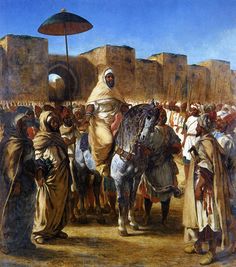
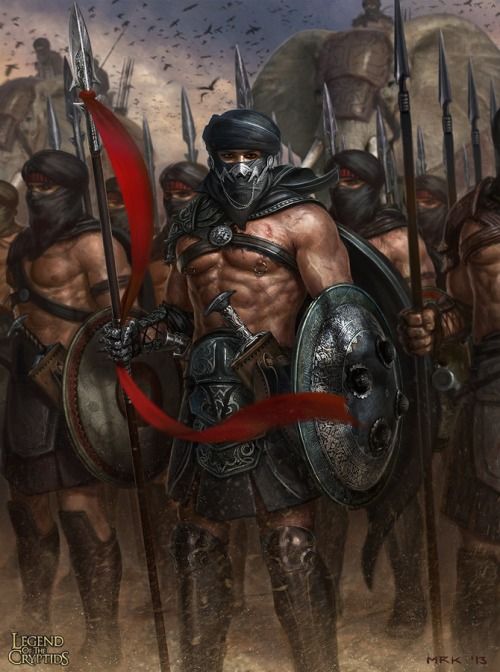
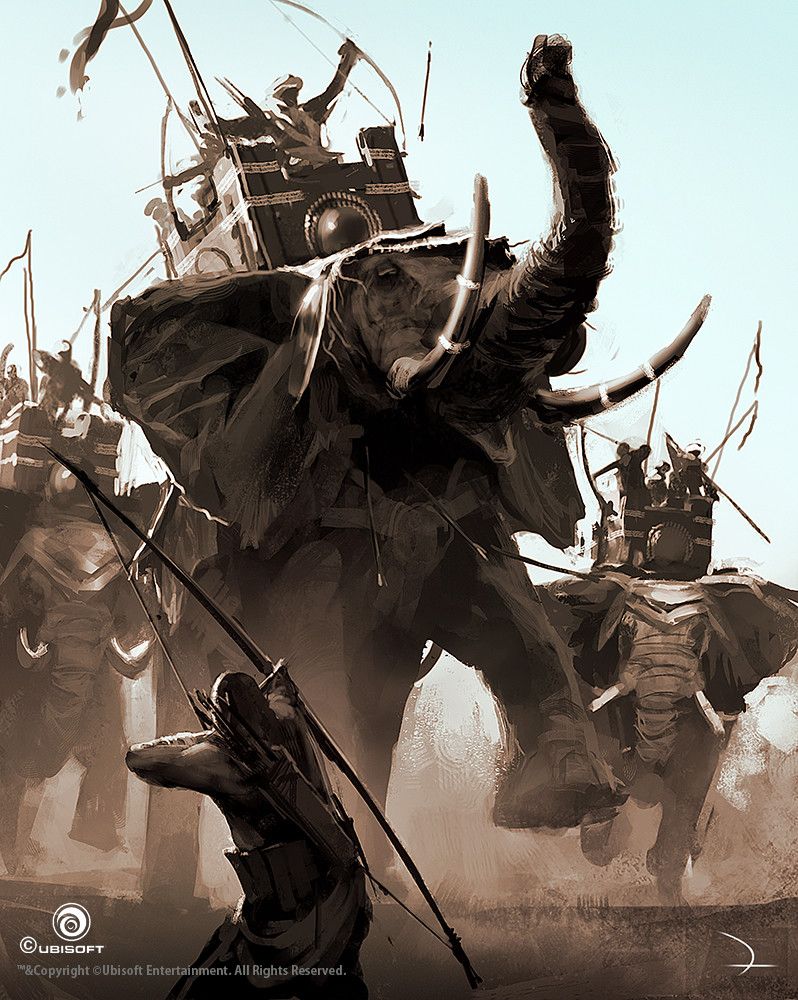
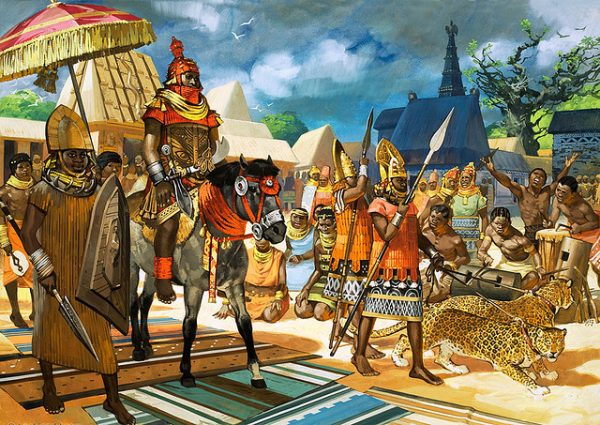
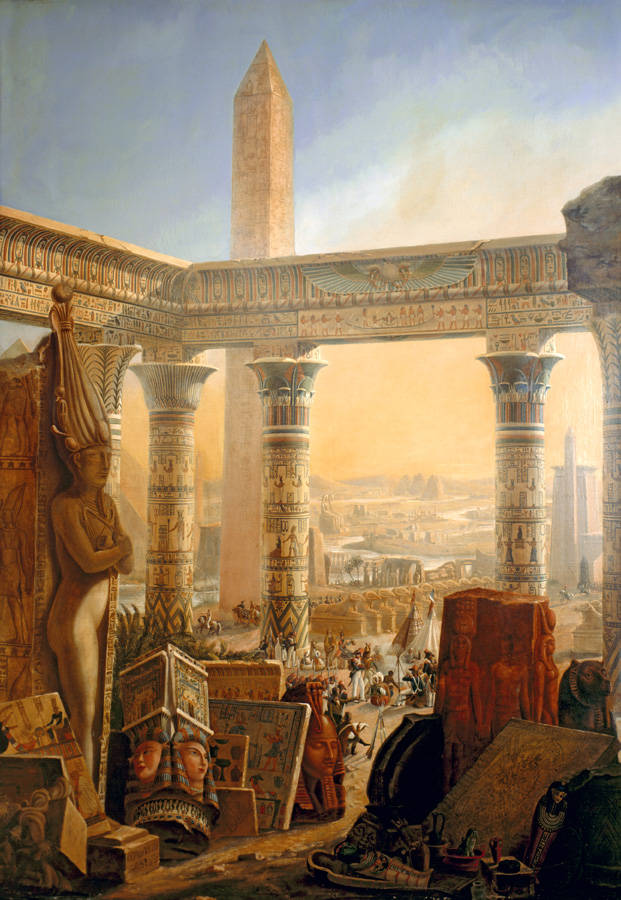

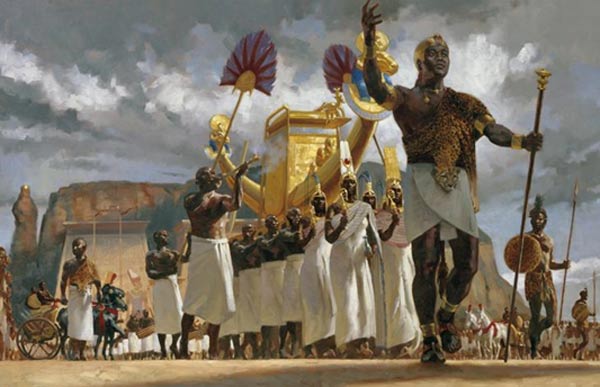
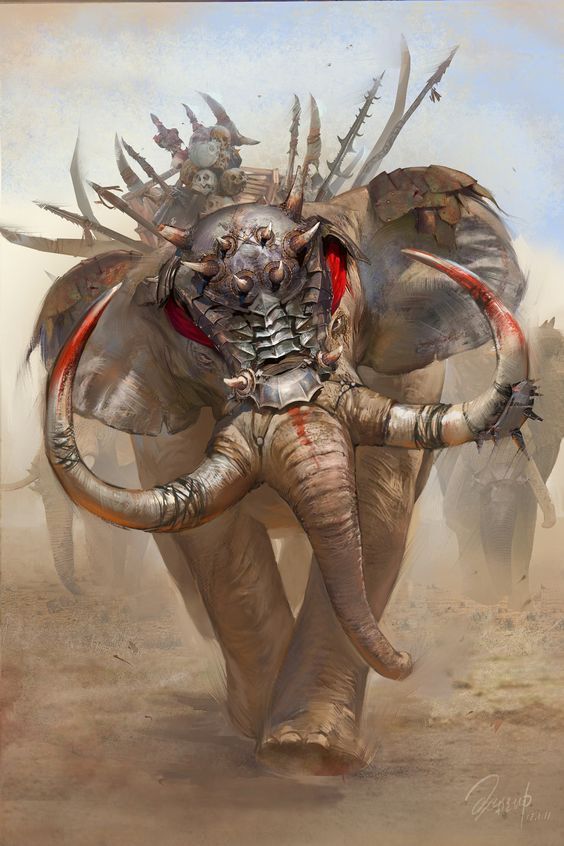
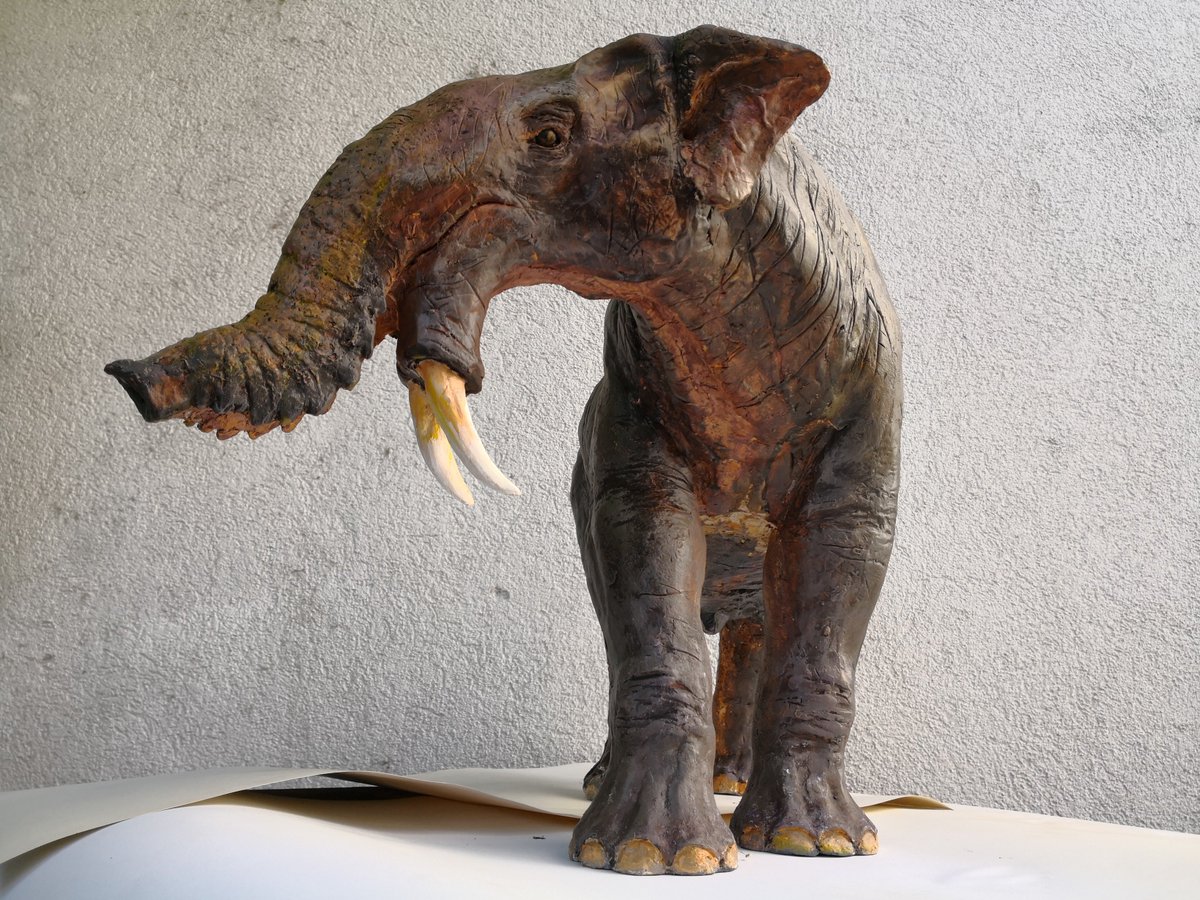







Comments